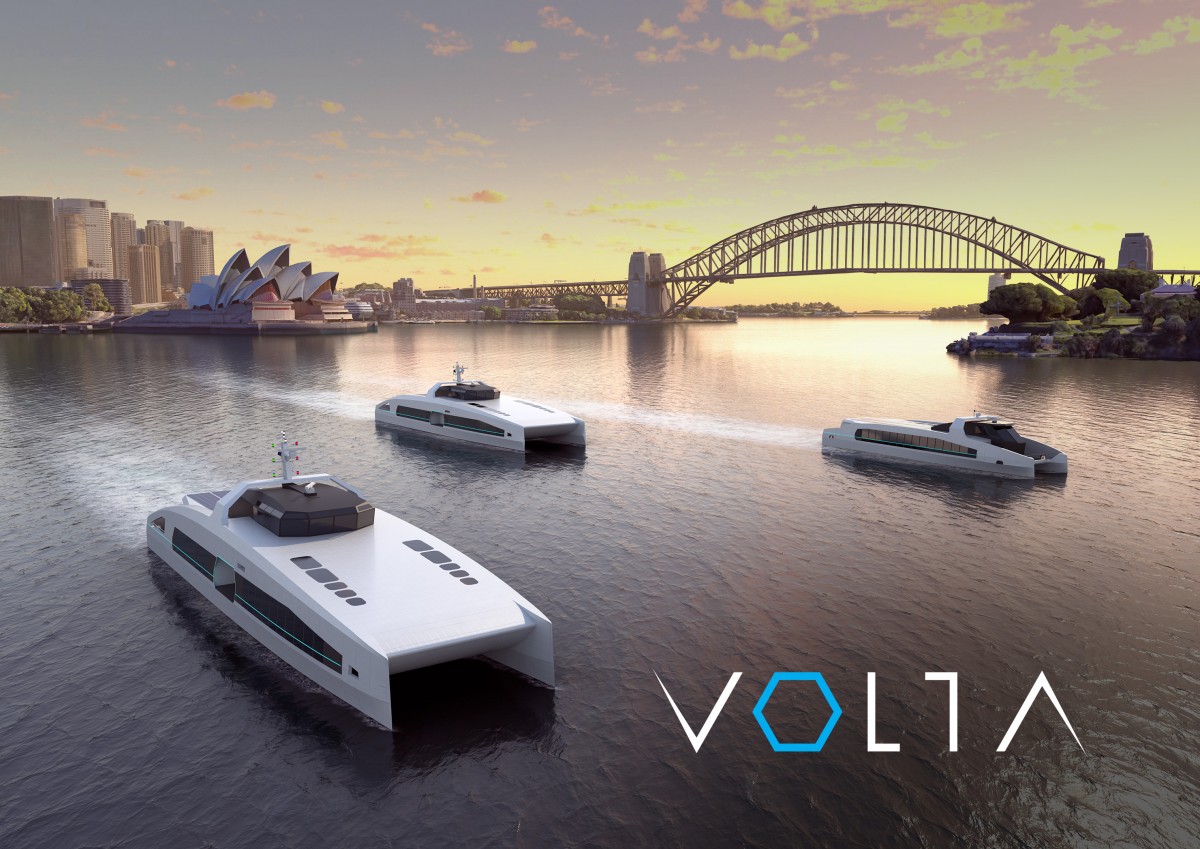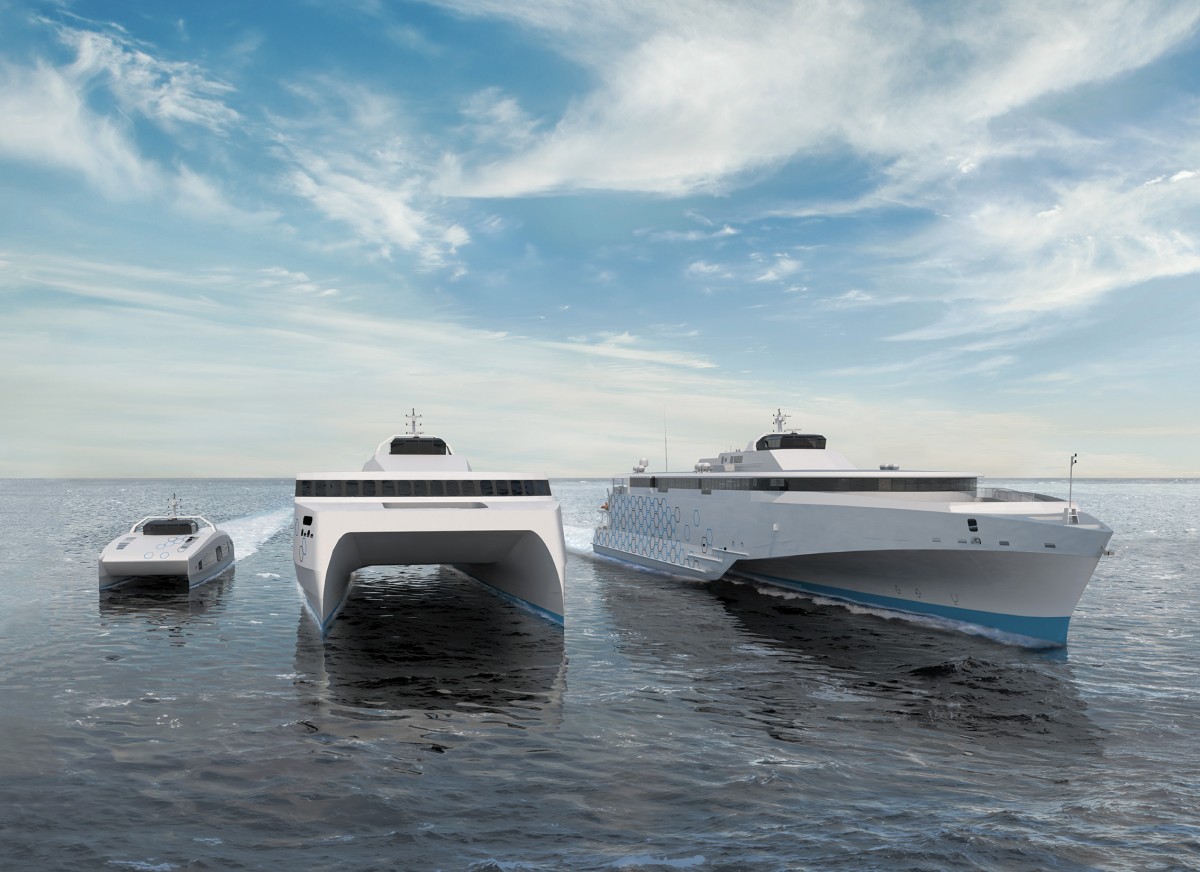Future-ready Fast Ferries: Developing pathways to Zero Emissions
The following article was published in the Interferry 2021 Conference Program.
Fast ferries are both highly energy intensive and weight sensitive. Vessel designers, engine OEMs and operators have already pushed the limits of efficiency gains to minimize fuel costs and emissions from the current generation of diesel powered vessels. The incredible gap between the energy density of diesel to that of zero carbon alternatives such as hydrogen, ammonia or batteries has left many wondering; can the fast ferry sector decarbonize without compromising on speed? Austal's answer is YES and we believe the future of a net zero fast ferry, built from green aluminium and powered by zero emission energy, is closer to becoming a reality than most realise.

Austal’s new VOLTA range of electric-powered ferries is capable of net zero emissions.
Operators of larger vessels looking to replace existing diesel vessels today, for whom the current economic and logistical challenges of hydrogen make a zero emission vessel infeasible in the near term, have two alternative paths to a low carbon future. Both Paths maximize the potential upgradability of the vessel in years to come to meet increasing CII requirements and ultimately achieve zero emission status.
Path 1 – the mechanical drive-train. Vessel propulsion is through mechanical coupling to engines capable of blended fuel combustion today, including hydrogen with either diesel or LNG. In the future these engines are re-rated to burn 100% hydrogen or an e-fuel such as green ammonia to achieve a net zero emission vessel, though after treatment of the exhaust will still be required.
Path 2 – the electric drive-train. Vessel propulsion is through electric motors powered by a combination of shore-charged batteries and on-board combustion generators. In the future the installed battery capacity is progressively increased as battery (and shore charging) technology improves and the onboard power generation is transitioned to hydrogen fuel cells or combustion of an e-fuel.
An electric drive-train vessel will have higher upfront capex as well as shore-side investment requirement but provides immediate operational and reliability benefits as well as zero emissions whilst in port. Ultimately in the zero emission future state the greater efficiency of electric motors powered by batteries and fuel cells should result in a lower absolute energy requirement and hence operational cost through Path 2 than Path 1.

Austal has proven, future-ready fast ferry platforms that offer pathways to zero emissions.
Finally emissions embodied in the manufacture of the vessels can also be radically reduced. Aluminium has long been the fast ferry sectors material of choice from which to fabricate highly efficient hull forms. This is set to continue in a low carbon world with the emergence of cost competitive “green aluminium” [Ref 3], made with low cost renewable electrons and also providing the opportunity for recycling at end of life.
The future of the high speed ferry industry comes in the form of fast, net zero emission, highly efficient aluminium multi-hull vessels.
That future is now.
REFERENCES
1. Lazard.com | Levelized Cost of Energy and of Storage
2. 'Green’ Hydrogen to Outcompete ‘Blue’ Everywhere by 2030 | BloombergNEF (bnef.com)
3. Green Aluminum is Competitive Today. It’s Time to Start Transforming | BloombergNEF (bnef.com)
For more information on the Volta range of electric ferries visit volta.austal.com or to find out more about Austal's proven high speed ferry platforms that offer pathways to zero emissions, email [email protected]


